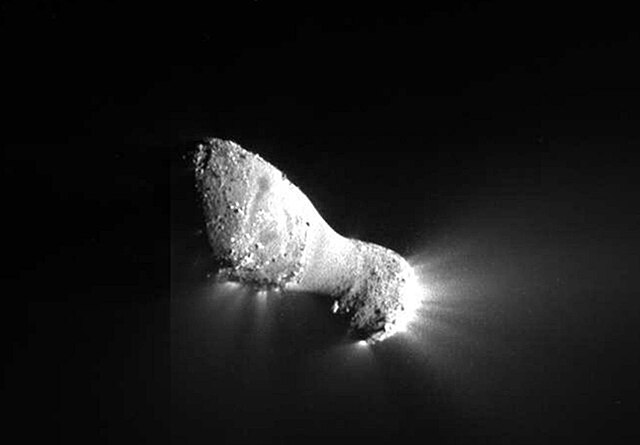1998 KY26 is a nearly spherical sub-kilometer asteroid, classified as a near-Earth object of the Apollo group. It measures approximately 30 meters (100 feet) in diameter and is a fast rotator, having a rotational period of only 10.7 minutes. It was first observed on 2 June 1998, by the Spacewatch survey at Kitt Peak National Observatory during 6 days during which it passed 800,000 kilometers (half a million miles) away from Earth (a little more than twice the Earth–Moon distance).
Three views of a computer model of 1998 KY26, derived from radar observations in 1998
A near-Earth object (NEO) is any small Solar System body orbiting the Sun whose closest approach to the Sun (perihelion) is less than 1.3 times the Earth–Sun distance. This definition applies to the object's orbit around the Sun, rather than its current position, thus an object with such an orbit is considered an NEO even at times when it is far from making a close approach of Earth. If an NEO's orbit crosses the Earth's orbit, and the object is larger than 140 meters (460 ft) across, it is considered a potentially hazardous object (PHO). Most known PHOs and NEOs are asteroids, but about 0.35% are comets.
Image: Asteroid 2006DP14
Image: The VLT images the very faint Near Earth Object 2009 FD
Image: Comet Hartley 2
Radar image of (388188) 2006 DP14 recorded by a DSN antenna




